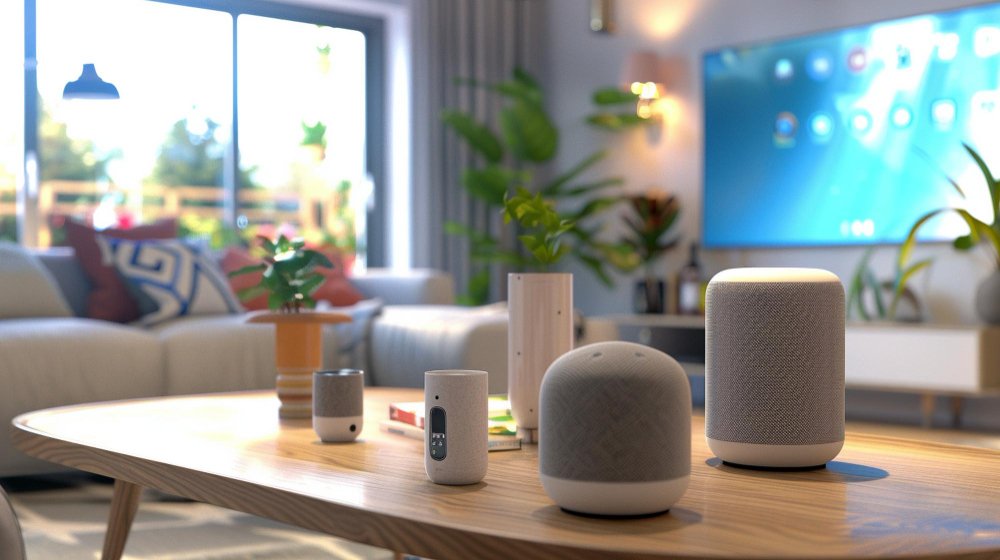In the contemporary landscape of residential living, the integration of smart home devices has emerged as a transformative force, reshaping daily routines and enhancing the overall quality of life for homeowners. These innovative technologies offer seamless automation, enhanced comfort, improved energy efficiency, advanced security, and the facilitation of independent living, marking a significant departure from traditional home setups. Let’s delve deeper into the ways in which smart home devices are revolutionizing everyday life, accompanied by examples illustrating their practical applications.
Seamless Automation for Simplified Living:
Smart home devices introduce a new era of automation, streamlining everyday tasks and simplifying household management. Imagine waking up to the gentle illumination of smart lights gradually brightening your bedroom, while your smart thermostat adjusts the temperature to your preferred setting. As you move through your home, motion sensors trigger lighting to illuminate your path, and smart speakers provide updates on your daily schedule and the day’s weather forecast. Examples of such devices include smart light bulbs (e.g., Philips Hue), smart thermostats (e.g., Nest), and voice-activated assistants (e.g., Amazon Alexa, Google Assistant).
Enhanced Comfort and Convenience:
At the core of smart home technology lies the promise of enhanced comfort and convenience, tailored to the preferences and routines of occupants. Picture arriving home after a long day to find your smart door lock automatically unlocking as you approach, while your smart coffee maker starts brewing your favorite blend. Meanwhile, smart blinds adjust to let in the perfect amount of natural light, and your favorite playlist begins to play through your whole-home audio system. Examples of such devices include smart door locks (e.g., August Smart Lock), smart coffee makers (e.g., Smarter Coffee), and smart blinds (e.g., Lutron Serena Shades).
Improved Energy Efficiency and Sustainability:
Smart home devices play a crucial role in promoting energy efficiency and sustainability, offering homeowners the tools to reduce waste and lower their environmental footprint. Consider a scenario where your smart thermostat learns your temperature preferences over time, adjusting heating and cooling schedules to optimize energy usage and minimize costs. Meanwhile, smart plugs and power strips enable you to monitor and control the energy consumption of individual devices, helping you identify and eliminate energy vampires. Examples of such devices include smart thermostats (e.g., Ecobee), smart plugs (e.g., TP-Link Smart Plug), and energy monitoring systems (e.g., Sense Home Energy Monitor).
Enhanced Safety and Security:
Safety and security are paramount concerns for homeowners, and smart home devices offer advanced solutions to address these needs. Imagine receiving instant alerts on your smartphone when a motion sensor detects movement outside your home, allowing you to view live video footage from your outdoor security cameras and communicate with visitors via two-way audio. Additionally, smart doorbell cameras provide real-time notifications and video recordings of package deliveries and visitors, enhancing security and peace of mind. Examples of such devices include smart security cameras (e.g., Ring Spotlight Cam), smart doorbell cameras (e.g., Nest Hello), and motion sensors (e.g., Samsung SmartThings Motion Sensor).
Facilitating Aging in Place and Independent Living:
Smart home devices are empowering individuals to age in place and maintain their independence while receiving the support and assistance they need. Consider a scenario where an elderly individual utilizes a smart medical alert system equipped with fall detection sensors and GPS tracking, providing instant access to emergency services in case of accidents or emergencies. Meanwhile, voice-activated assistants and smart home monitoring systems enable hands-free control of lights, appliances, and environmental settings, promoting autonomy and convenience. Examples of such devices include smart medical alert systems (e.g., Medical Guardian), voice-activated assistants (e.g., Apple HomePod), and smart home monitoring systems (e.g., Samsung SmartThings).
Conclusion:
In summary, smart home devices are revolutionizing everyday life by offering seamless automation, enhanced comfort, improved energy efficiency, advanced security, and the facilitation of independent living. Whether it’s controlling lighting and temperature settings with voice commands or monitoring security cameras and receiving alerts on smartphones, these innovative technologies are reshaping the way we interact with our living spaces. As smart home technology continues to evolve and become more accessible, the benefits it offers—convenience, efficiency, sustainability, security, and independence—will continue to transform residential living and enrich the lives of homeowners worldwide

